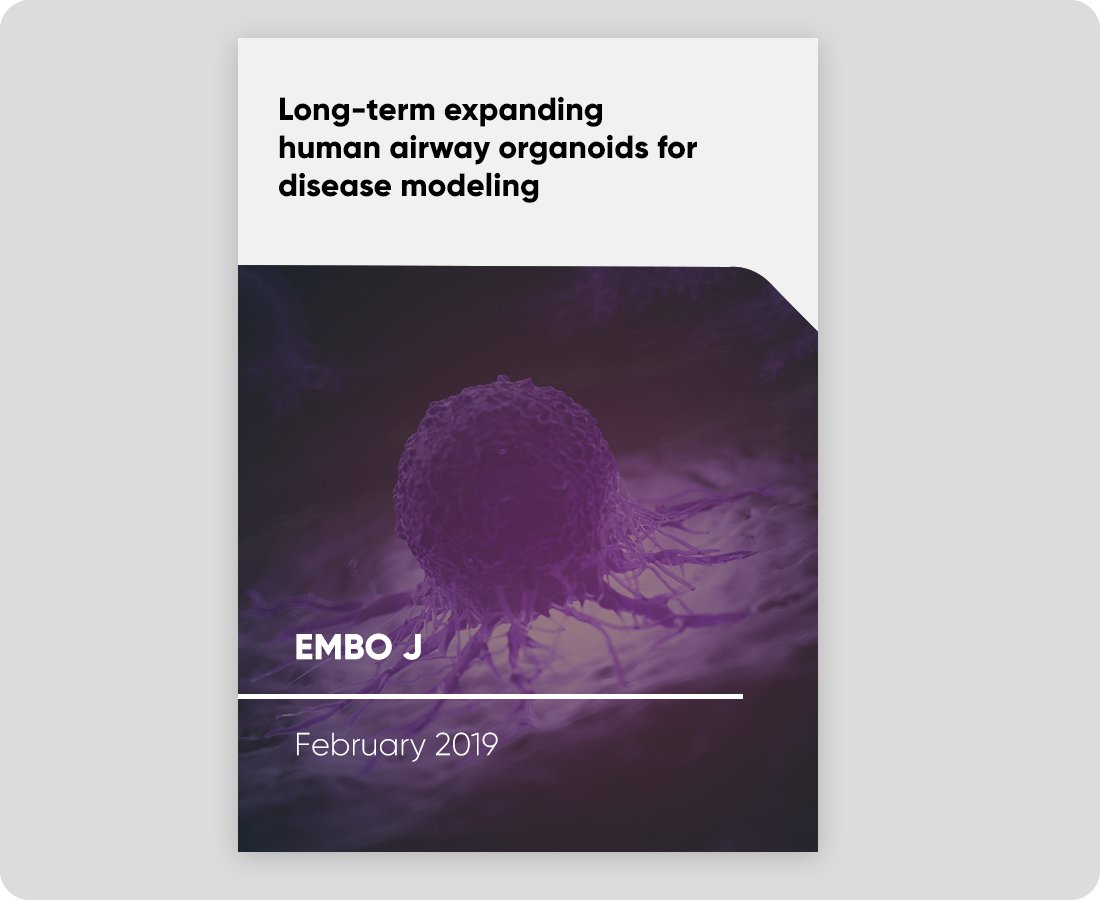Abstract
Organoids are self-organizing 3D structures grown from stem cells that recapitulate essential aspects of organ structure and function. Here, we describe a method to establish long-term-expanding human airway organoids from broncho-alveolar resections or lavage material. The pseudostratified airway organoids consist of basal cells, functional multi-ciliated cells, mucus-producing secretory cells, and CC10-secreting club cells. Airway organoids derived from cystic fibrosis (CF) patients allow assessment of CFTR function in an organoid swelling assay. Organoids established from lung cancer resections and metastasis biopsies retain tumor histopathology as well as cancer gene mutations and are amenable to drug screening. Respiratory syncytial virus (RSV) infection recapitulates central disease features, dramatically increases organoid cell motility via the non-structural viral NS2 protein, and preferentially recruits neutrophils upon co-culturing. We conclude that human airway organoids represent versatile models for the in vitro study of hereditary, malignant, and infectious pulmonary disease.
Discover more from HUB:
Explore our organoid screening platform
Discover other publications on patient-derived organoids.


